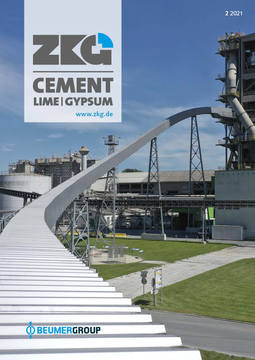New brochure on metallurgical slags
A reliable supply of resources is essential for the German economy. For many years, industrial by-products from copper, ferrochrome and lead production and from the extraction of waelz oxide have made an important contribution to this. The new brochure “Metallurgical slags. Secondary raw material for sustainable management” published by the Duisburg-based Gütegemeinschaft Metallhüttenschlacken (Quality Association for Metal Smelter Slags) informs decision-makers at ministries, public authorities and companies about the production, quality, environmental properties and areas of application of the valuable materials. The publication has been available free of charge as a pdf from the quality association since January 2021.
In Germany, 1.3 million t of metallurgical slags are purposefully produced each year in the production of non-ferrous metals. They are used as aggregates and granules, above all in road construction and hydraulic engineering, in cement and as blasting abrasives. The secondary raw materials meet the quality and environmental compatibility requirements necessary for the respective areas of application. This is ensured not only by national and international regulations, but also by the criteria of the Quality Association for Metallurgical Slags and the studies and research carried out by the internationally renowned FEhS Building Materials Institute in Duisburg.
Regular in-house and external tests as well as voluntary examinations by the companies confirm the ecological harmlessness of the industrial by-products. In addition, metal mill slags replace one million tons of primary raw materials such as crushed stone and gravel per year in Germany alone, whose deposits are dwindling worldwide and whose extraction requires massive intervention in nature.
Thomas Merkel, Managing Director of the quality association and expert for transport construction at the FEhS Institute: “Recycling and resource efficiency have always been important topics in the non-ferrous metals industry. The various metal smelter slags produce excellent, market-tested products. Like iron mill slags, they contribute to efficient and resource-conserving operations in the future as well. The quality association, in close cooperation with the FEhS Institute, is committed to achieving this goal.”


